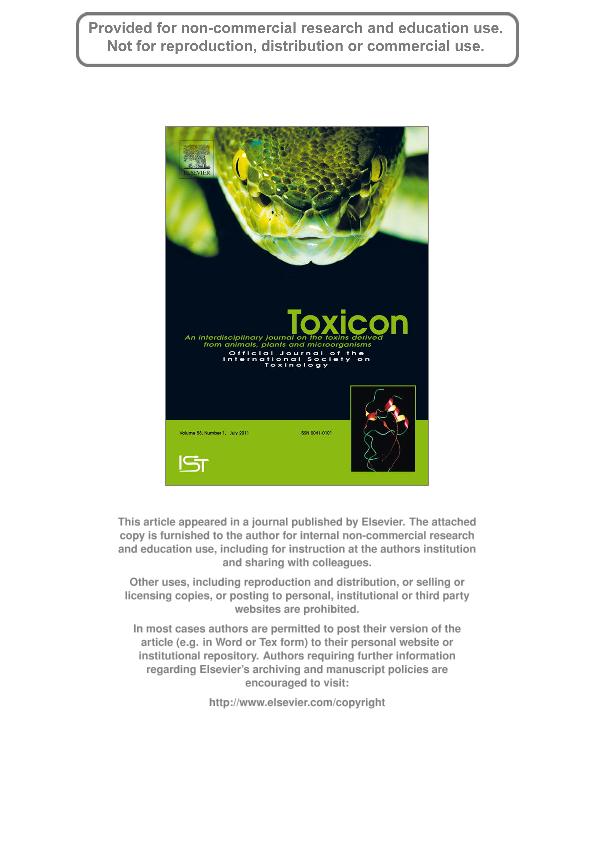Artículo
A comparative study of the effects of venoms from five rear-fanged snake species on the growth of Leishmania major: Identification of a protein with inhibitory activity against the parasite
Fecha de publicación:
07/2011
Editorial:
Pergamon-Elsevier Science Ltd
Revista:
Toxicon
ISSN:
0041-0101
e-ISSN:
1879-3150
Idioma:
Inglés
Tipo de recurso:
Artículo publicado
Clasificación temática:
Resumen
Leishmania parasites of several species cause cutaneous and visceral disease to millions of people worldwide, and treatment for this vector-borne protozoan parasite typically involves administration of highly toxic antimonial drugs. Snake venoms are one of the most concentrated enzyme sources in nature, displaying a broad range of biological effects, and several drugs now used in humans were derived from venoms. In this study, we compared the effects of the venoms of the South American rear-fanged snakes Philodryas baroni (PbV), Philodryas olfersii olfersii (PooV) and Philodryas patagoniensis (PpV), and the North American rear-fanged snakes Hypsiglena torquata texana (HttV) and Trimorphodon biscutatus lambda (TblV), on the growth of Leishmania major, a causative agent of cutaneous leishmaniasis. Different concentrations of each venom were incubated with the log-phase promastigote stage of L. major. TblV showed significant anti-leishmanial activity (IC50 of 108.6 μg/mL) at its highest concentrations; however, it induced parasite proliferation at intermediate concentrations. PpV was not very active in decreasing the parasitic growth, and a high final concentration (1.7 mg/mL) was necessary to inhibit proliferation by only 51.5% ± 3.6%. PbV, PooV and HttV, at final concentrations of 562, 524 and 438 μg/mL respectively, had no significant effect on L. major growth. The phospholipase A2 of TblV (trimorphin) was isolated and assayed as for crude venom, and it also exhibited dose-dependent biphasic effects on the parasite culture, with potent cytotoxicity at higher concentrations (IC50 of 0.25 μM; 3.6 μg/mL) and stimulation of proliferation at very low concentrations. Anti-leishmanial activity of TblV appears to be solely due to the action of trimorphin. This is the first report of anti-leishmanial activity of rear-fanged snake venoms, and these results suggest novel possibilities for discovering new protein-based drugs that might be used as possible agents against leishmaniasis as well as tools to study the biology of Leishmania parasites.
Archivos asociados
Licencia
Identificadores
Colecciones
Articulos(CCT - NORDESTE)
Articulos de CTRO.CIENTIFICO TECNOL.CONICET - NORDESTE
Articulos de CTRO.CIENTIFICO TECNOL.CONICET - NORDESTE
Citación
Peichoto, María Elisa; Tavares, Flávio L.; DeKrey, Gregory; Mackessy, Stephen P.; A comparative study of the effects of venoms from five rear-fanged snake species on the growth of Leishmania major: Identification of a protein with inhibitory activity against the parasite; Pergamon-Elsevier Science Ltd; Toxicon; 58; 1; 7-2011; 28-34
Compartir
Altmétricas




